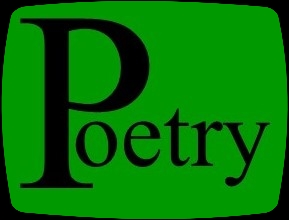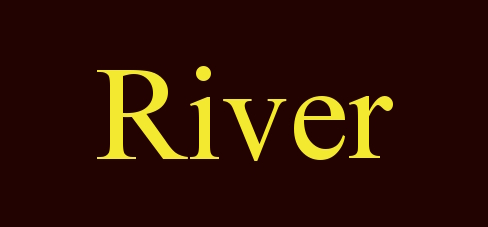|
|
|
|
|

|

|
|
|
|
|
|

|
Definition Of Art Art As Investigation Art As Healing Multidisciplinary Overview: Our world view is expanding with technological evolution. Art embraces this expansion, matching it with a human scale. A convergence of ancient time with future time plays within these ideas. Philosophical unity seeks the expression of consciousness in art by resolving the appearance of dualities through a greater unity. The process of art juxtaposes these dualities momentarily on the way to symbolic evolution. The ancient art of the bushmaster joins the techno-age polymath in creating an art validated by classic values. New Media Mosaic: New Media Mosaic is a synthesis of many of my periods converging in a scalable installation expression. The modular unit assembled installation began with the "Big Picture" This was a "Time" based construction using elements from 1969 to 2007. The new media mosaics of 2012 bring together the forms of these periods in a unified motif. The scale-ability of these installations means that they may be created in any desired size. "Scalable" Digital works are at the core of this media. Mixed Media Mosaic: Growing out of the New Media Mosaic is a re-combination of periods converging back on to the canvas as an installation series. The Mixed Media units are an assembled installation using 13"x19" sheets of canvas. The mixed media mosaics feature configurations of 4x, 6x, 9x, and 16x. As an example, 16x would be 16 units of 13"x 19" canvas sheets painted with mixed media. Digital Art: New Media is birthed in the digital domain. This modern context is home to the migrated human intelligence. The quality of creation remains the responsibility of individual artists working in the digital media. A sequence of crossing and recrossing borders effects interactions adapting the Digital to the Analog and back to the digital. River has been programing and adapting digital equipment to play, print, and produce images for near three decades. Computer sequencing is separate from sampling where the illusion of perfect replication, permeates a myth of perfection. All time based works are complicated by translation and incorporate process-based and inherently flawed perceptions as part of direct experience. The digital artworks, are a realization of the migration to the inevitability of technology. These pieces embrace the tradition of playfulness as a core to insights of aesthetic virtue. Technophobia brings established perspectives, which hearken to a simpler age. The fact that in "the good old days" the artists of the time were scrambling to incorporate mathematics, geometry, camera obscura and new pigments gets lost in the haze. The strength of art migration to new technology is in the affirmation that the artist is the spiritual guide bringing what is necessary to surpass technological limitations. Oil Paintings: These works are painted on paper, canvas, or hardboard panel. The attitude I bring to individual works is related to the subject and requirements of the image. Generally ways of working can be categorized by a manor depicted by Frans Hals, and Rembrandt van Rijn. The Frans Hals example is of a carefully constructed architecture maximizing luminosity with no re-working, and the Rembrandt example of re-working the painting until the image is satisfied. The re-working method can become extensive in layering glazes as well as solid painting. In some extreme instances the original image is obscured in the eventual outcome. In addition to the long life of the oil painting, aesthetic quality in the ability for refined subtleties of color mixing makes it desirable. Acrylic Paintings: These works are also painted on paper, canvas, or hardboard panel. Fast drying time makes this media good for extensive glazing process. The new abstract mosaic installations of 2010 are painted with acrylic. The large format and need for flexibility in the installation process, epically for site specific works makes acrylics the media of choice. Mixed Media: The idea of mixed-media is like players in a band using their art to reach beyond individual abilities to the greater vision. Mixed- media ... one spirit. The transcendence of language, beyond media into the realm of meaning is the heart of literature. It is this commonality of shared meaning I seek to discover in the new evolving mixed media works. acrylic and oil painting has several advantages. I always start with acrylic as it is fast in blocking in the work. The physical architecture for a durable work also requires that acrylics are not painted over oils. The acrylics also have a punch, even when glazed down. This contrasts the elegant subtleties of oils refined micro structure. There are also different properties in color mixing which can be a strategic advantage. When a work is reworked extensively, it occasionally occurs that the acrylic part of the painting is completely obscured. Usually the combination exist side by side offering the particular strengths each has to offer. Similarly the more complex combination of inks, watercolor, pastel and print, which may be combined with oil and acrylic, offer a unique range of expression. This combination can offer subtleties seldom experienced. As the complexity of combination evolves, respect for structural architecture must temper inspiration. A masterful work will be strong as well as beautiful. I find the continuing mixing of these visual media languages makes me more prepared to find the precise voice each individual painting needs. Mixed Media and Giclée Print: What is Giclée? Giclée (zhee-clay) is a French word that means "to spray", and this term has become the descriptive name for high-quality prints and reproductions that are produced on professional ink-jet printers, using pigment-based inks rated 200 years lightfast, on archival substrates (paper/canvas). If your print is a copy of an existing work, even though it may be a different size than the original, it is a reproduction. It may be labeled as a fine art giclée reproduction if it is printed on archival art paper using archival pigmented inks. If you are working digitally, and have created a new work digitally, and are making multiple copies of this new work, each copy is a giclée print. If you have created a new work, and make only one copy, then it is labeled a giclée original, or a unique giclée. Mixed Media Originals: This process often starts with a print. It is then re-worked significantly, with other media. The additional media may include, watercolor, inks, acrylic, pastel, drawing pencils, oil stick, oil paint with a variety of application technique. Limited Editions: Usually consisting of 100 copies or less, each print or reproduction in the edition is hand-signed and numbered. Each comes with a certificate of authenticity stating the number of prints in the edition, the paper (known as the substrate) used and the date the edition was released. This certificate also tells what number the print is in the edition, expressed as a fraction: the first print in an edition of 25 would be 1/ 25, the second print 2/25 and so on. The artist signs these certificates, guaranteeing the buyer that they are getting a particular print in the edition, and also guaranteeing that when the edition is complete, no more prints of this image will be made. Open Editions: the option of making an unlimited number of copies of an image. Prints in open editions are not numbered or hand signed, and do not come with a certificate of authenticity. © 2010 Glen River | ||